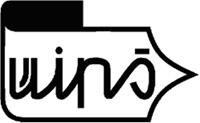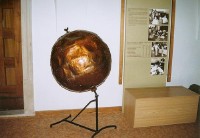Museum of Special Education in Levoča - Institute of Information and Prognoses of Education in Bratislava

Contact: Oľga Tinajová (f) Head
Námestie Majstra Pavla 28, 054 01 Levoča, Slovensko
7.30am-3.30pm Mon-Fri, closed Sat-Sun
 The Museum of Special Education (MŠŠ) in Levoča was founded on the initiative of the Society for Special and Curative Education under Dr Vladimír Predmerský as a historical and documentation centre for special and curative education. Opened on 16 November 1990, it belongs administratively under the Institute of Information and Prognoses of Education in Bratislava. It is the only museum of this kind in Slovakia and has partners in Frankfurt, Madrid, Prague and Brno. The museum includes a permanent exhibition on the History of Special Education in Slovakia from the Earliest Times to the Present, a Depository for archiving three-dimensional collection objects, two exhibition rooms with a total area of 111 square metre, and a historical library on special education and -documentary scripts.
The Museum of Special Education (MŠŠ) in Levoča was founded on the initiative of the Society for Special and Curative Education under Dr Vladimír Predmerský as a historical and documentation centre for special and curative education. Opened on 16 November 1990, it belongs administratively under the Institute of Information and Prognoses of Education in Bratislava. It is the only museum of this kind in Slovakia and has partners in Frankfurt, Madrid, Prague and Brno. The museum includes a permanent exhibition on the History of Special Education in Slovakia from the Earliest Times to the Present, a Depository for archiving three-dimensional collection objects, two exhibition rooms with a total area of 111 square metre, and a historical library on special education and -documentary scripts.
The primary mission of the Museum of Special Education is to provide the general public, teachers and pupils of special schools with a permanent exhibition on the history of special education in Slovakia and to process and document the field of special education, to present current knowledge of professional public as well as to participate in the development of care for the disabled youth. The permanent exhibition is divided into the entrance part, the historical part and a part dedicated to visual and hearing impaired as well as physically and mentally handicapped individuals. The museum staff supplements tours of the museum with professional interpretation in both German and English. The activities of the museum are performed through collecting and creative activities in close continuity with special schools and facilities. The object of the collecting and creative activities is a complex educational and teaching process of special schools, public services in the field of special education.
 In 1990 the collection amounted to 380 objects. The collection currently totals 3,414 objects. A substantial part of the collection is created by pupils of special schools - three-dimensional objects, compensation and working aids, diplomas, photos, class sheets, textbooks and works created by disabled children. The Museum of Special Education also holds some 15,000 scripts, which include many rare manuscript notes by special education pioneer Viliam Gaňa, including Hungarian and German manuscripts, as well as manuscripts from his student days in Budapest. There are also 2,304 library units recorded in the historical special-educational library.
In 1990 the collection amounted to 380 objects. The collection currently totals 3,414 objects. A substantial part of the collection is created by pupils of special schools - three-dimensional objects, compensation and working aids, diplomas, photos, class sheets, textbooks and works created by disabled children. The Museum of Special Education also holds some 15,000 scripts, which include many rare manuscript notes by special education pioneer Viliam Gaňa, including Hungarian and German manuscripts, as well as manuscripts from his student days in Budapest. There are also 2,304 library units recorded in the historical special-educational library.
From the historical point of view the most valuable are the remnants of the Gaňa and Zeman libraries. The Museum of Special Education fulfils an ideological, cultural and general educational role. Within the general educational activities the lecturers warn visitors of many diseases and physical disabilities resulting from insufficient attention, and excessive use of alcohol and drug addiction with its devastating consequences. Within its cultural and educational activities there are different thematic variable exhibitions, discussions, theatre performances, workshops and similar events organised on the premises of the museum where students of special as well as ordinary schools of the region are the main participants. Prospective visitors are particularly impressed by thematic variable exhibitions, which are compatible, diverse and interesting.
Overall, more than 70 exhibitions have been organised there, in the mind of visitors the most memorable were the Contractual Exhibition of Products for Blind and Partially Sighted in Slovakia, 'The Light in Us' art works and products of pupils of special schools in the Slovak Republic, the International Exhibition of Bronze Sculptures for the Blind-Manus Europae, the International Exhibition for the Blind from Paris - Let's Play with Picasso - and the workshop for the blind 'Clay in My Hands', 'Education for All' - exhibition of books and teaching aids for physically impaired, 'Aj v nevidne vidieť' - 60 years of Matej Hrebenda Slovak Library for the Blind, and many more.
